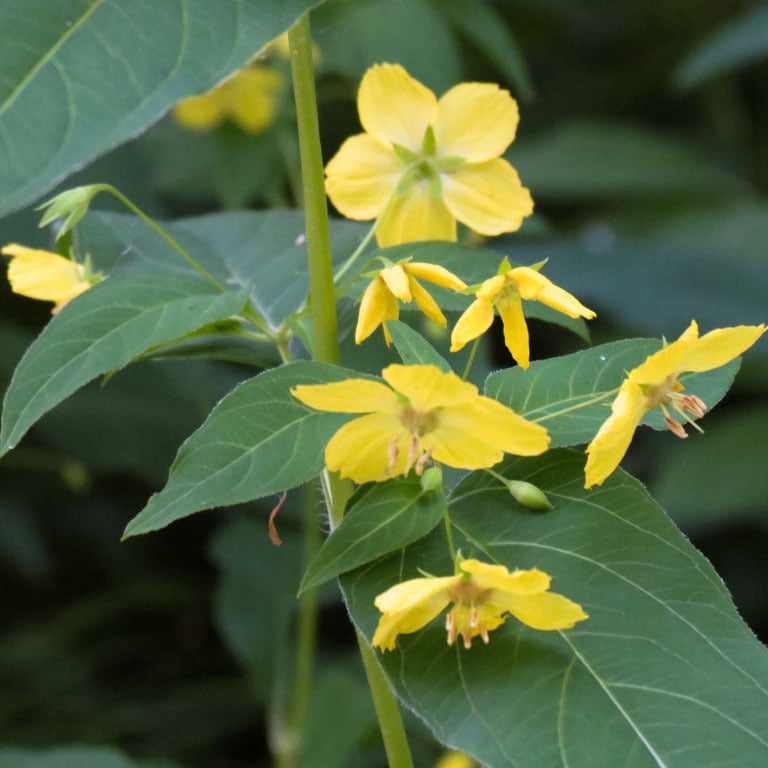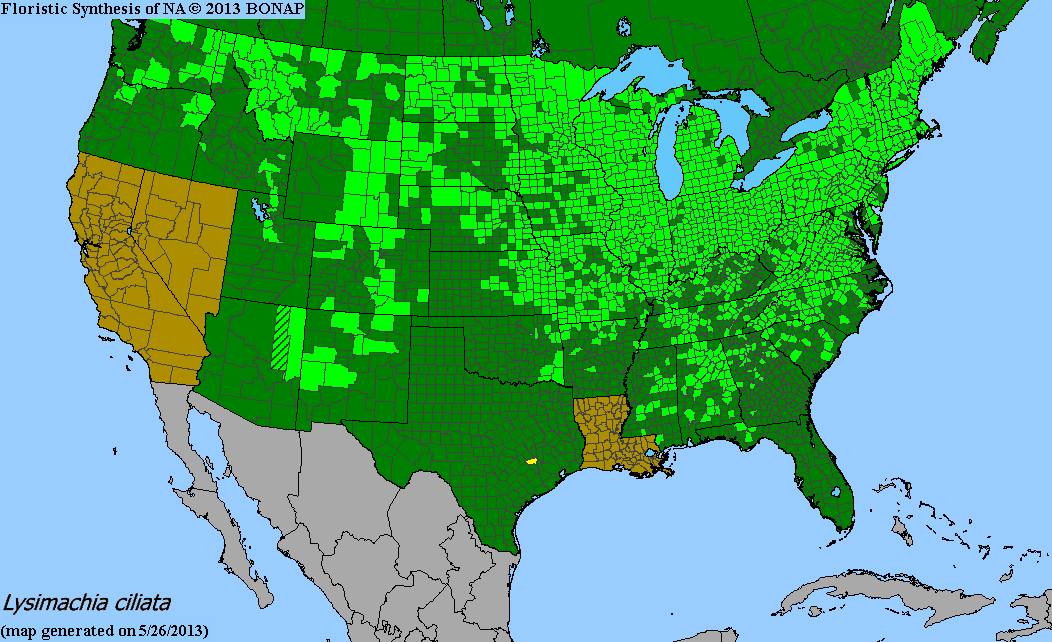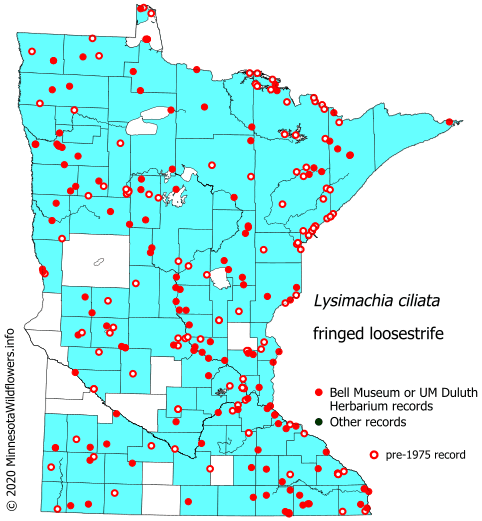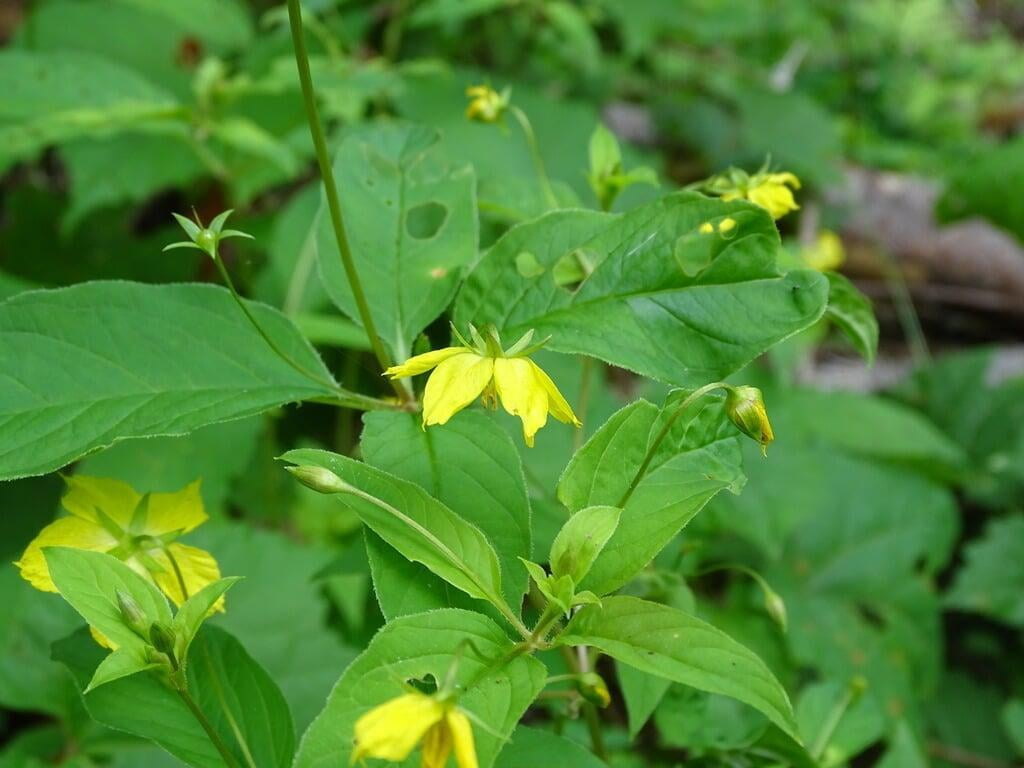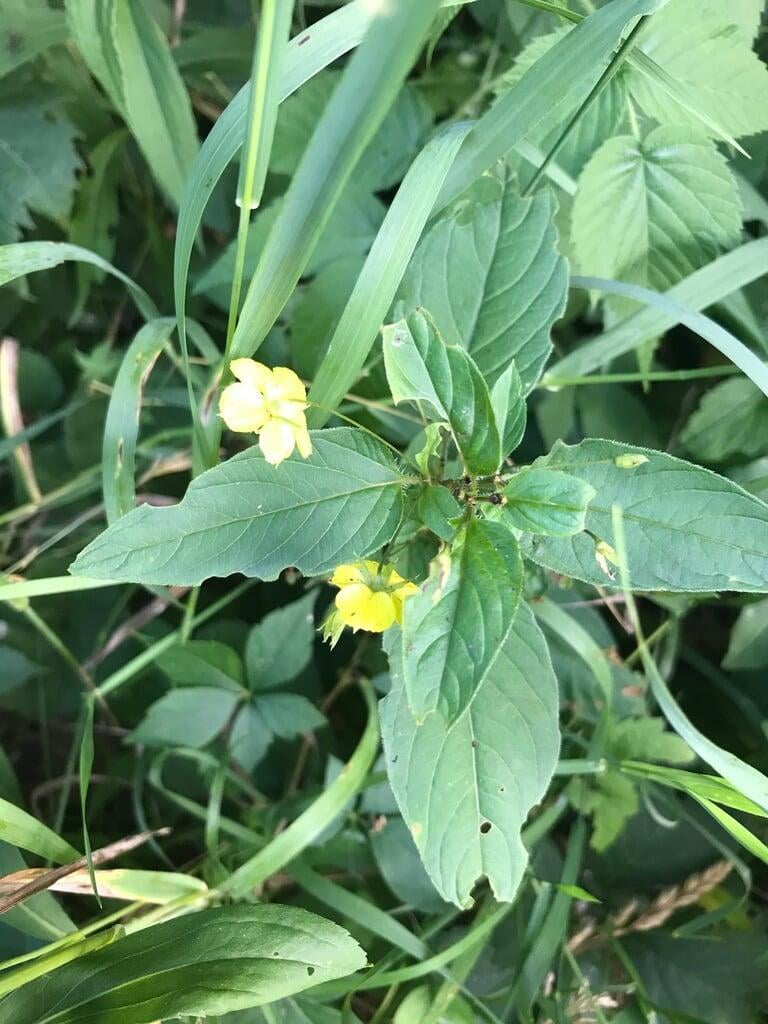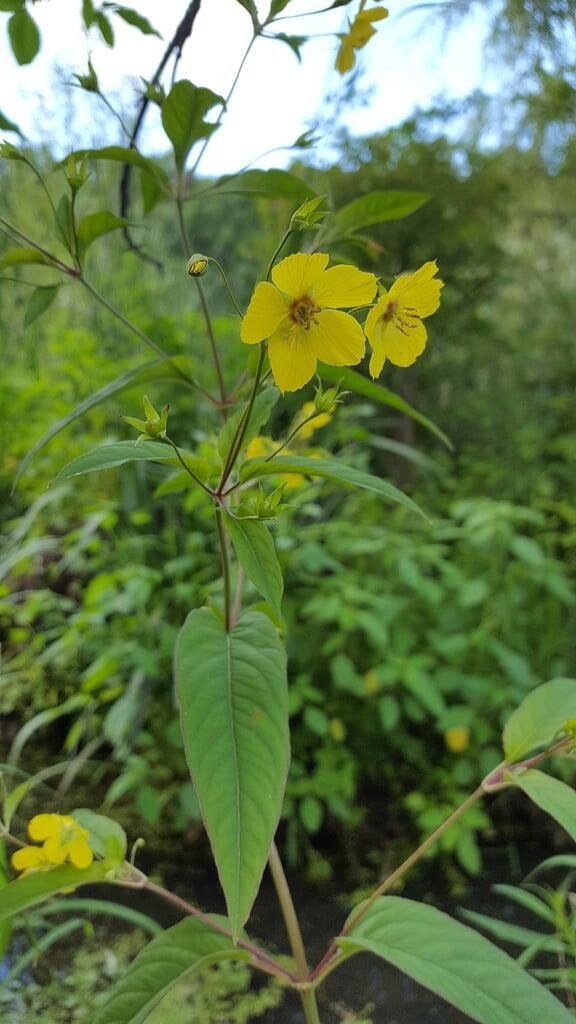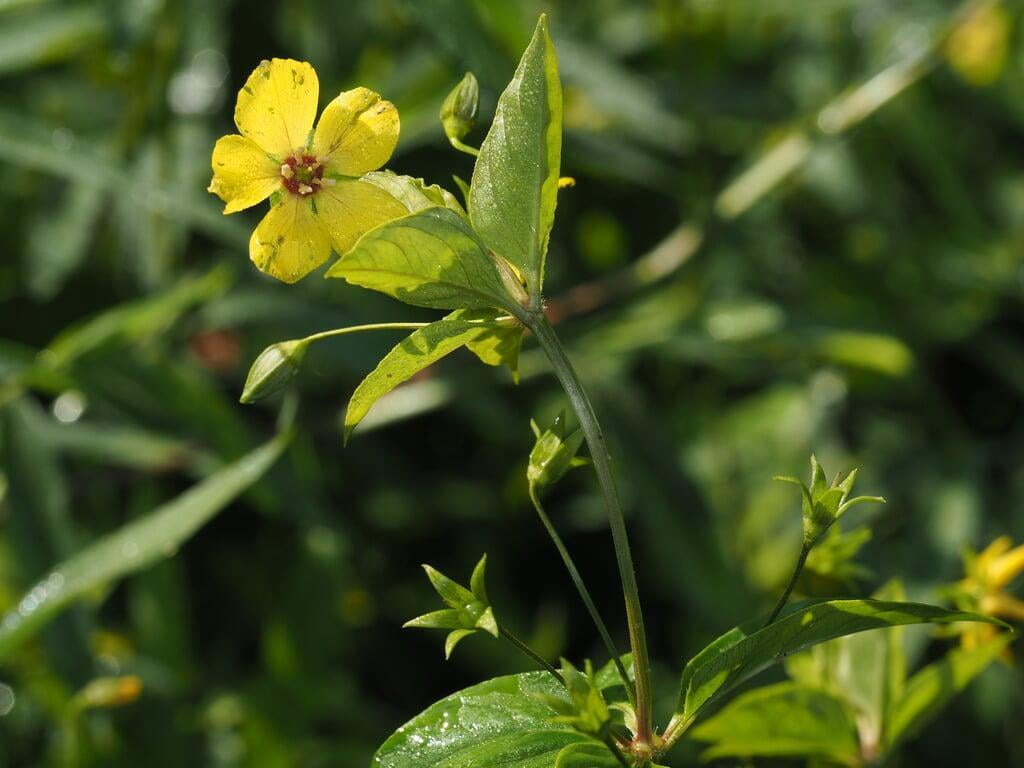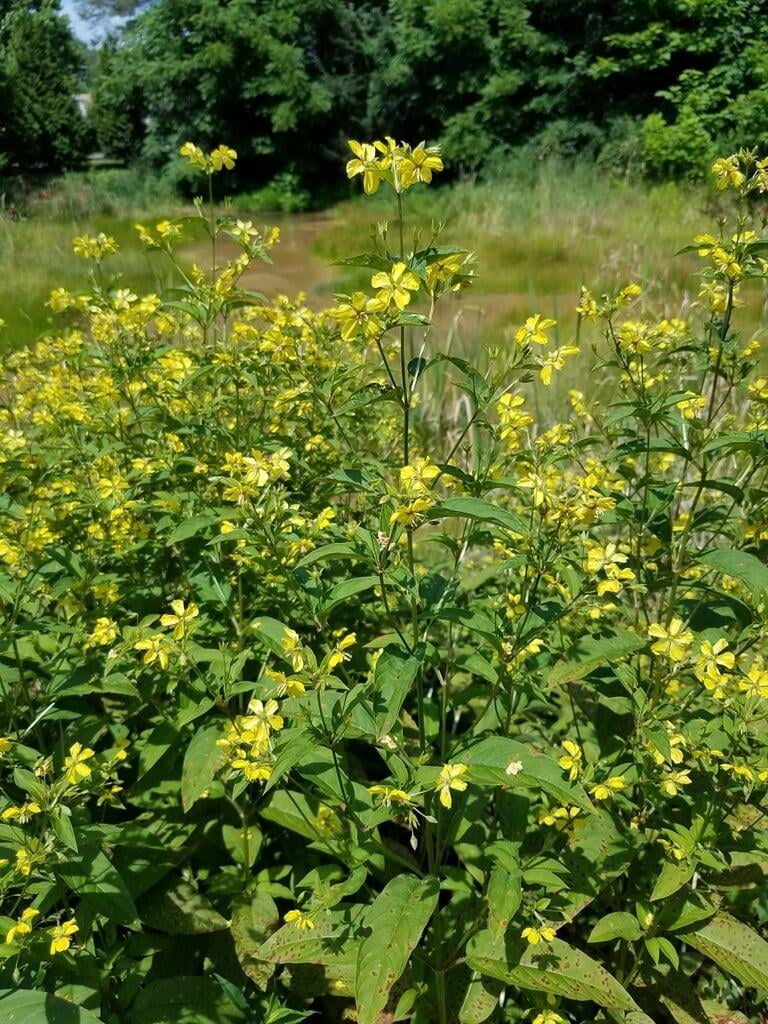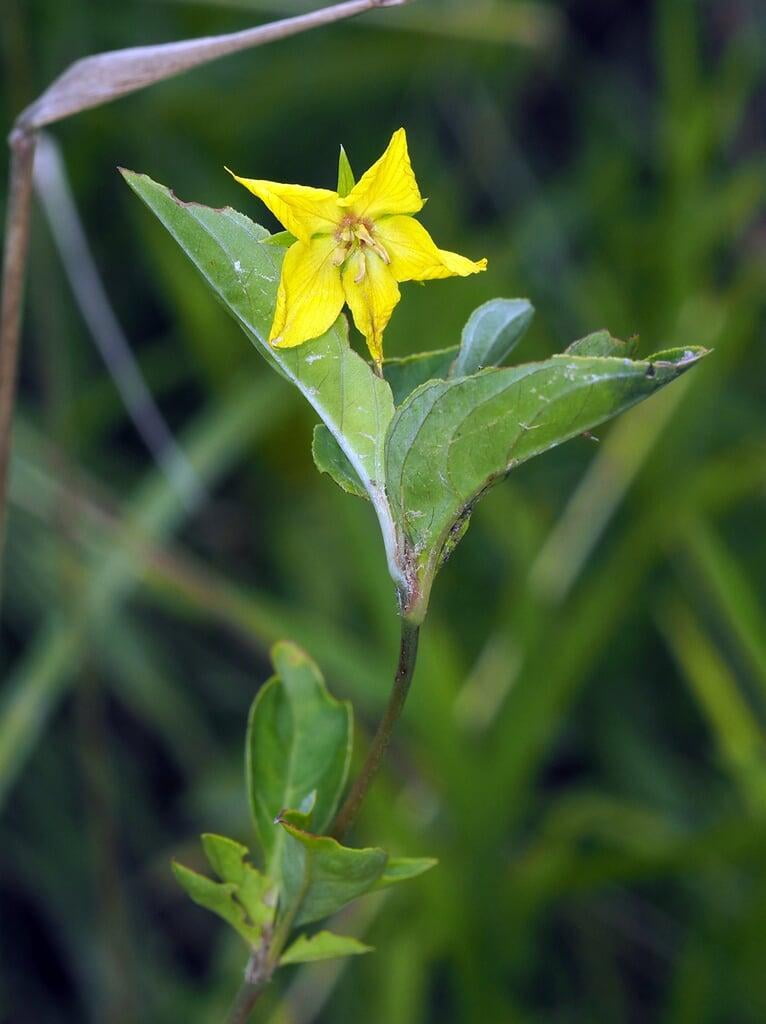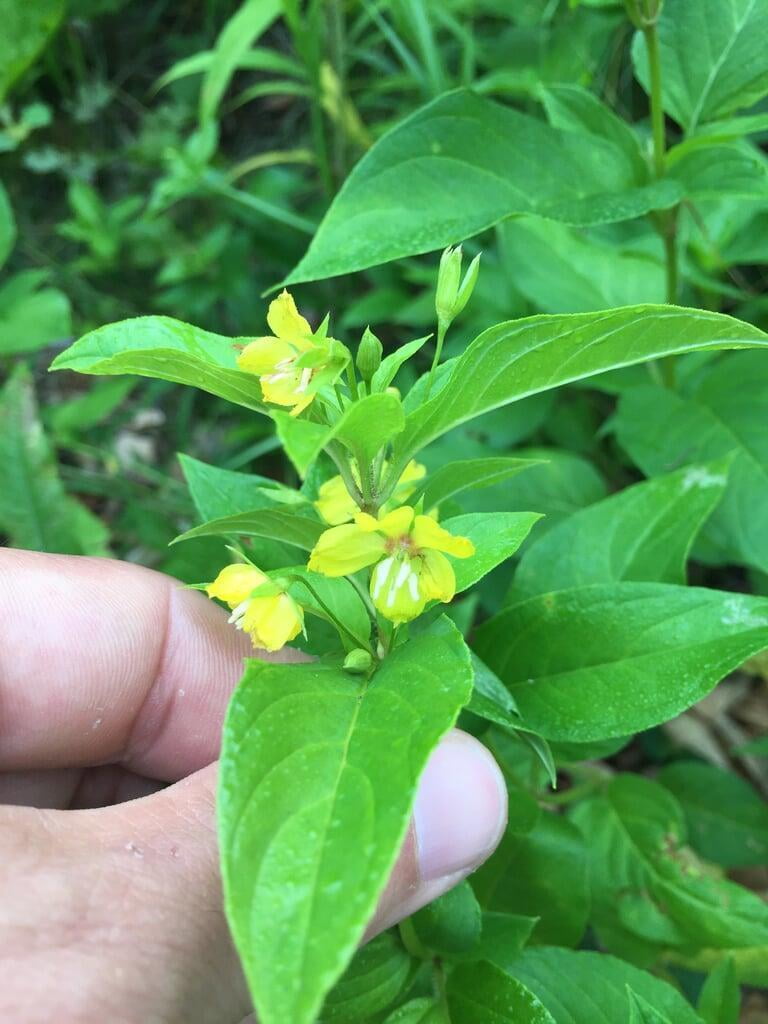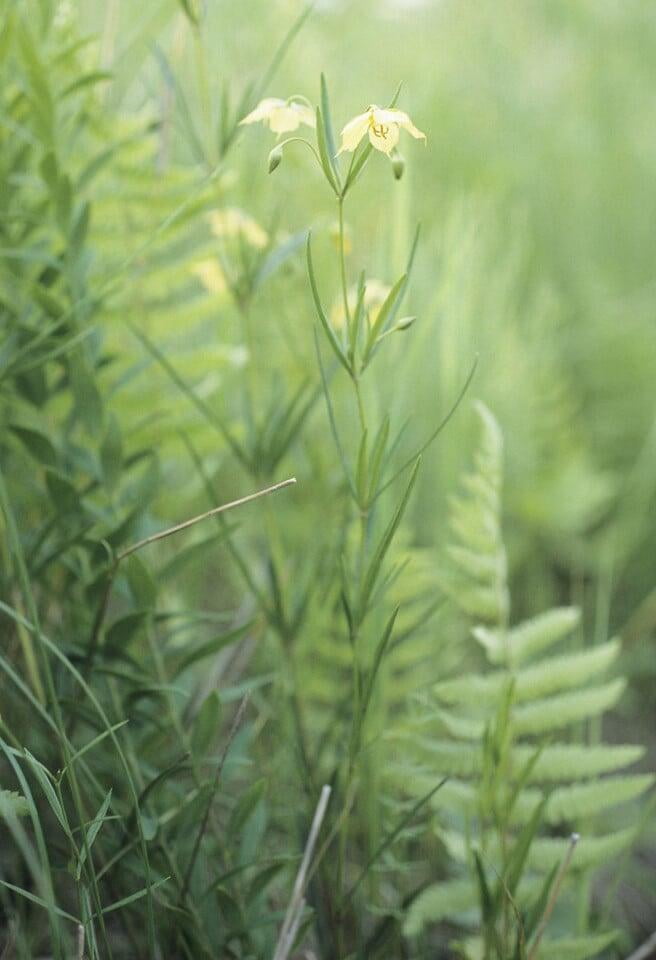Lysimachia ciliata
Fringed loosestrife Description:
Lysimachia ciliata, commonly known as fringed loosestrife, is a perennial plant that belongs to the Primulaceae family. It is native to North America and is found growing in wetlands, along streams, and in other moist habitats.
The plant typically grows to a height of 1-4 feet and spreads to form a dense clump of foliage. It has oval to lance-shaped leaves that are dark green and slightly hairy. The leaves are arranged in opposite pairs along the stem and can grow up to 5 inches long. The stem is typically smooth and greenish-brown in color.
In mid to late summer, fringed loosestrife produces spikes of showy, yellow flowers that are about 1 inch (2.5 cm) across. The flowers are arranged in a terminal raceme that can be up to 6 inches (15 cm) long. The nectar-rich flowers are attractive to bees, butterflies, and other pollinators.
Fringed loosestrife is a popular garden plant and can be grown in moist to wet soils in full sun to partial shade. It is a good choice for naturalized areas, pond edges, and bog gardens, as well as for groundcover in shaded areas. The plant has a number of medicinal uses and has been traditionally used as a herbal remedy for a variety of ailments, including as a treatment for respiratory issues.
While fringed loosestrife can be an attractive and beneficial plant in the garden, it is important to be cautious about its potential to become invasive in some areas. Check with your local conservation authority or extension office to determine whether this plant is suitable for your area.
Native Range:
Fringed loosestrife is found across most of the continental United States, from Washington to Maine and down to Texas.
Standard Plant Information:
Plant Height: 1' - 4'
Bloom Time: June - August
Preferred Habitat: Does well in part shade to full sun. Often found in moist thickets, swamps, along shores, and floodplains.
Sowing:
For most homeowners, the best option is to scatter seed on the ground by hand broadcasting at a minimum of 16-64 pls ounces per acre. For even coverage, we recommend that you broadcast seed in perpendicular rows across the site to ensure even coverage.
You’ll want to broadcast any grass seed first, which will get raked into the soil lightly. Next, it is ideal to mulch the area lightly with either a clean (no seed) straw or preferably with our native Little Bluestem straw, sold at our retail garden centers. After a light mulching is complete, now it’s time to broadcast your native wildflower seeds, which should not be raked into the soil. A good rain or watering is sufficient to cover the seed.
Planting:
Simply dig a hole in the soil slightly larger than the plant’s roots. Ensure that the soil line of the plant is maintained during the transfer (i.e. the plant should be at the same level with the ground as it was in the pot). Pack any loose dirt back around the plant and make sure you water it well the same day to ensure it has the best chance of survival.

